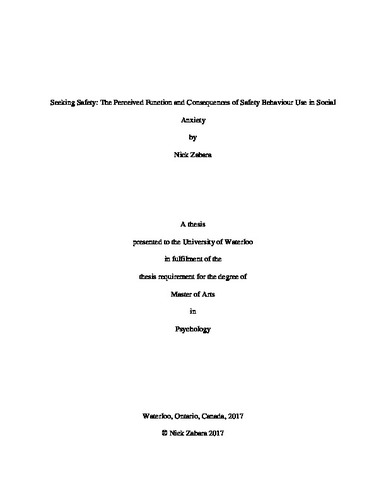| dc.description.abstract | This study was designed to examine the perceived self-protective function and consequences of safety behaviour use in social anxiety. The research explores how individuals’ selection and use of different types of safety behaviours might vary in relation to their specific social concerns and levels of trait social anxiety. It also explores differences between actor and observer interpretations of safety behaviour use and perceived utility, highlighting distinctions between how we view our own safety behaviour use versus how it might be viewed by others. Undergraduates completed self-report measures of social anxiety, specific social fears, and safety behaviour use. They also read vignettes in which they imagined and rated a central character who uses different types of safety behaviours (i.e., avoidance, impression management, or anxiety symptom management) in situations pertaining to different social fears (e.g., social incompetence, showing signs of anxiety, and physical unattractiveness). Results revealed that impression management safety behaviours were viewed as being most socially adaptive, while avoidance safety behaviours were relied upon by particularly anxious individuals, despite them not having as much faith in the usefulness of those safety behaviours. Findings also showed that there was a strong relation between perceived likelihood of using specific safety behaviours and their perceived social utility, but this perception was less robust when observing the safety behaviour use of other socially anxious individuals. By enriching our understanding of how and when specific safety behaviours promote positive or negative social outcomes within specific contexts, the present study lays the foundation for attempting to establish guidelines for more effective and idiographic treatment of socially anxious individuals. | en |

